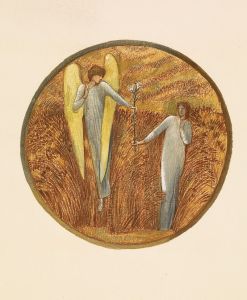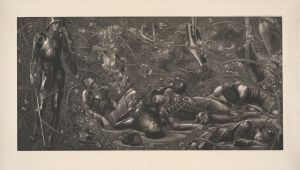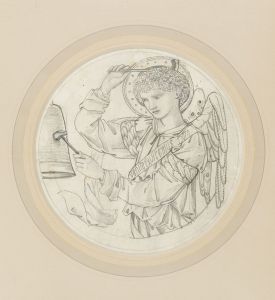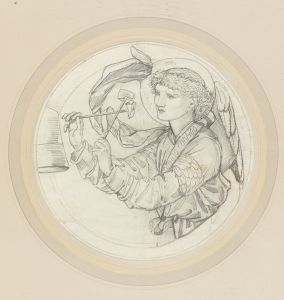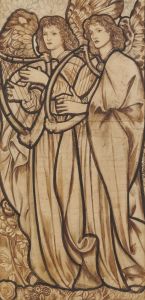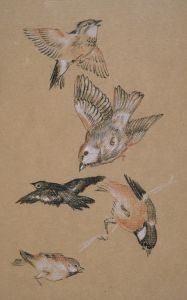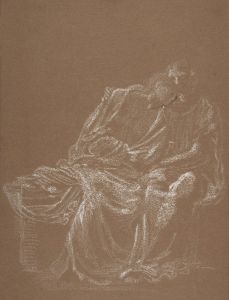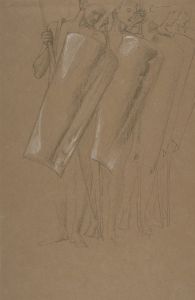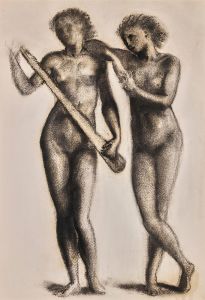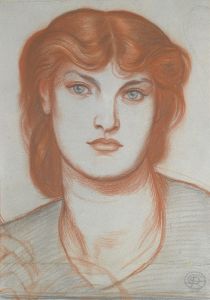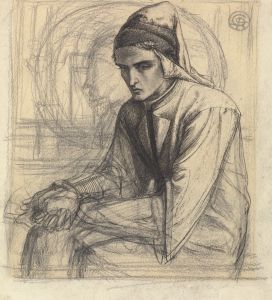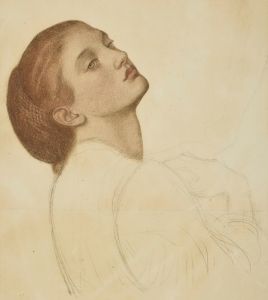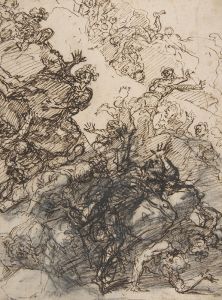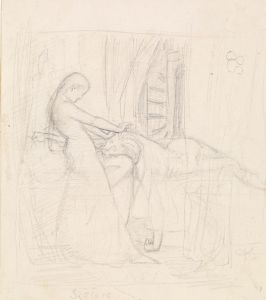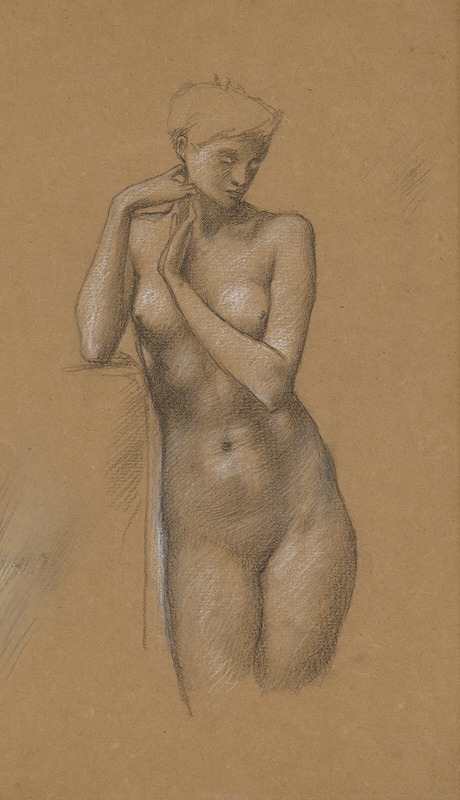
Study of female nude for the Hill Fairies in ‘Arthur in Avalon’
A hand-painted replica of Sir Edward Coley Burne-Jones’s masterpiece Study of female nude for the Hill Fairies in ‘Arthur in Avalon’, meticulously crafted by professional artists to capture the true essence of the original. Each piece is created with museum-quality canvas and rare mineral pigments, carefully painted by experienced artists with delicate brushstrokes and rich, layered colors to perfectly recreate the texture of the original artwork. Unlike machine-printed reproductions, this hand-painted version brings the painting to life, infused with the artist’s emotions and skill in every stroke. Whether for personal collection or home decoration, it instantly elevates the artistic atmosphere of any space.
The artwork Study of Female Nude for the Hill Fairies in ‘Arthur in Avalon’ is a preparatory drawing by the British Pre-Raphaelite artist Sir Edward Coley Burne-Jones (1833–1898). This study was created as part of Burne-Jones's extensive work on his unfinished masterpiece The Last Sleep of Arthur in Avalon. The larger painting, which was commissioned in 1881 by his patron and friend George Howard, the 9th Earl of Carlisle, was intended to depict the legendary King Arthur in a state of eternal rest on the mythical island of Avalon, surrounded by mourners and attendants.
The study focuses on the figure of one of the "Hill Fairies," ethereal beings who were envisioned as part of the dreamlike and otherworldly atmosphere of the final composition. Burne-Jones often created detailed preparatory studies for his paintings, using pencil, chalk, or other media to explore the anatomy, posture, and emotional expression of his figures. This particular drawing demonstrates his meticulous attention to the human form and his commitment to achieving a sense of grace and idealized beauty, hallmarks of the Pre-Raphaelite aesthetic.
Burne-Jones was deeply influenced by medievalism, Arthurian legends, and classical mythology, themes that permeate much of his work. His artistic style is characterized by elongated figures, intricate details, and a sense of melancholy and mysticism. The Study of Female Nude for the Hill Fairies reflects these qualities, showcasing his ability to blend naturalistic observation with a poetic, otherworldly sensibility.
The final painting, The Last Sleep of Arthur in Avalon, remained incomplete at the time of Burne-Jones's death in 1898. Despite its unfinished state, it is considered one of his most ambitious and significant works. The preparatory studies, including this one, provide valuable insight into his creative process and the evolution of his ideas for the painting.
The Study of Female Nude for the Hill Fairies is held in a private collection or museum, though specific details about its current location or provenance are not widely documented. It remains an important example of Burne-Jones's draftsmanship and his dedication to the Pre-Raphaelite ideals of beauty and storytelling.





